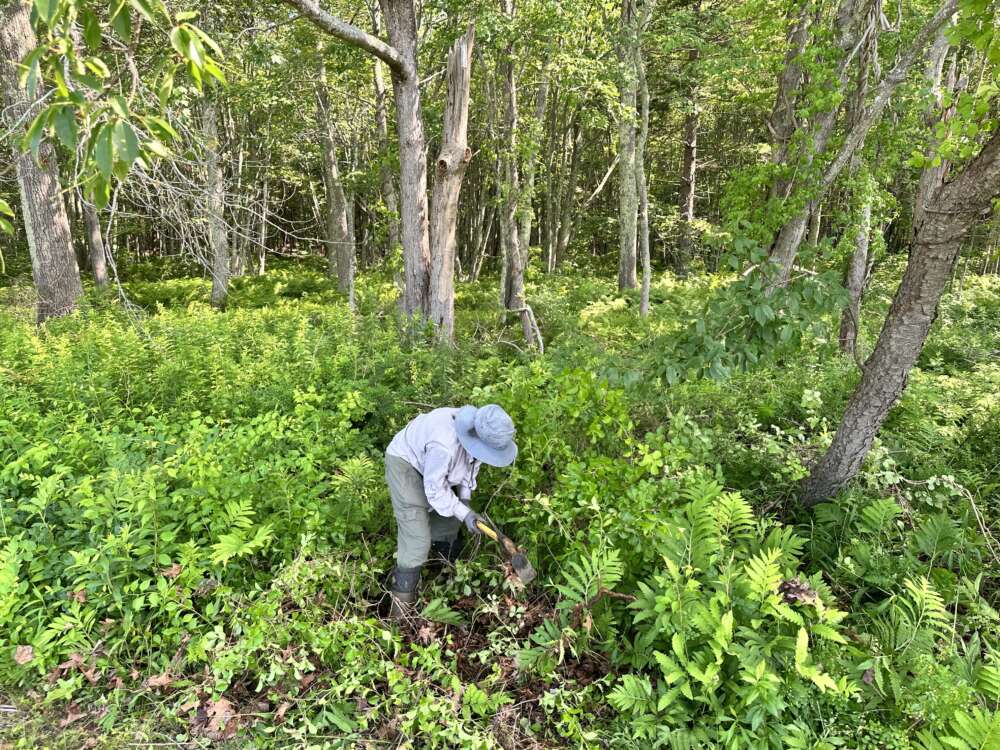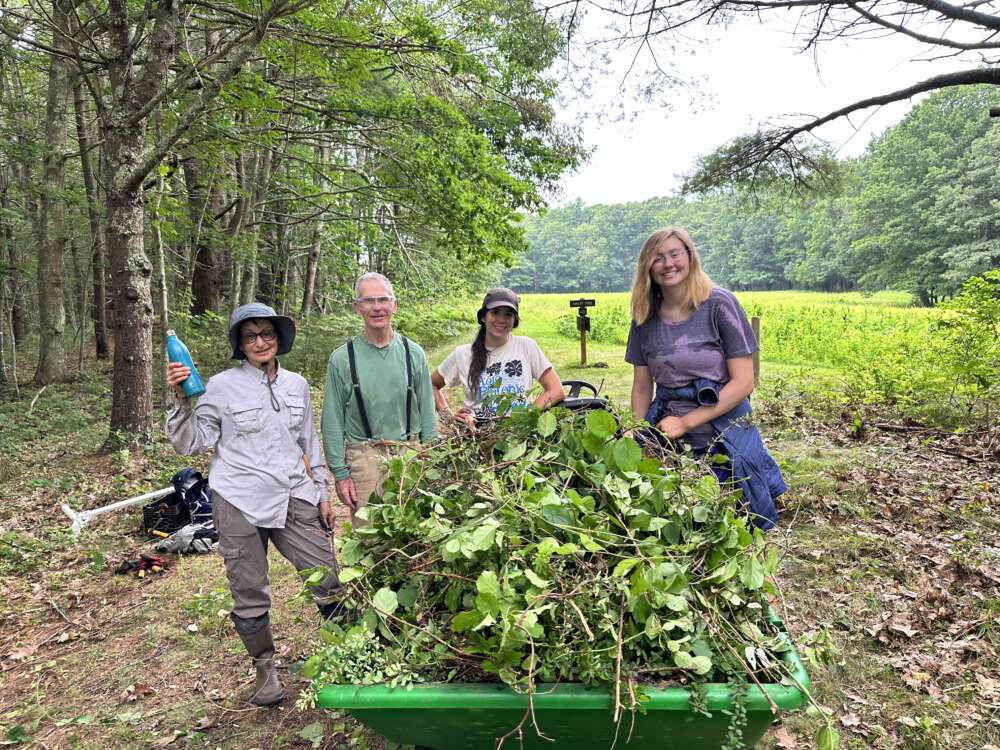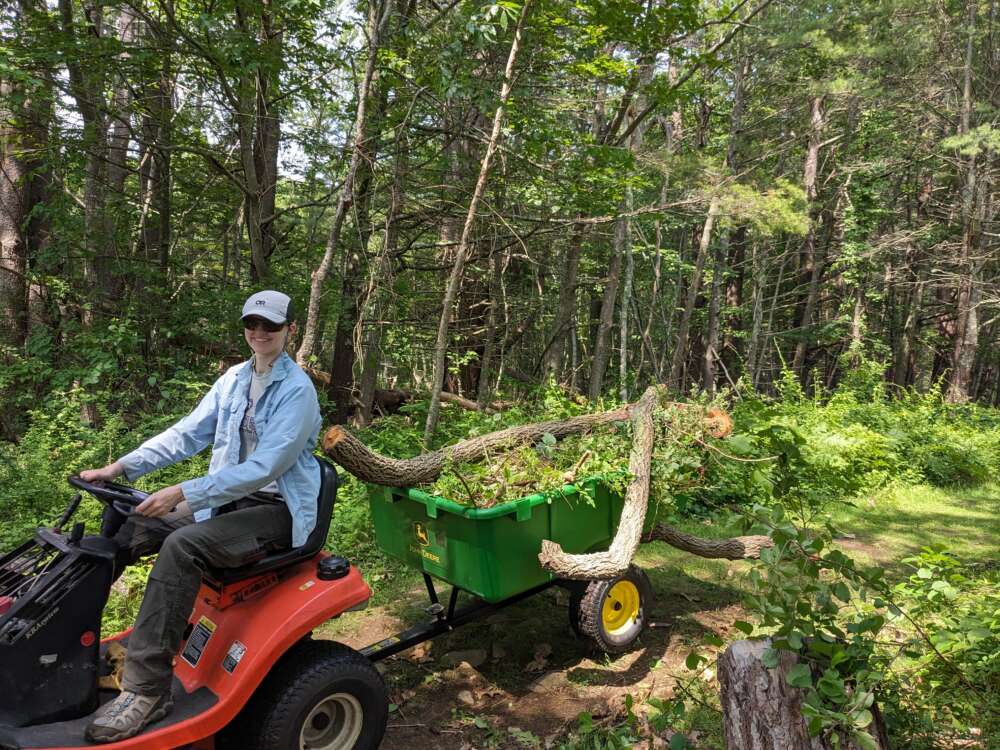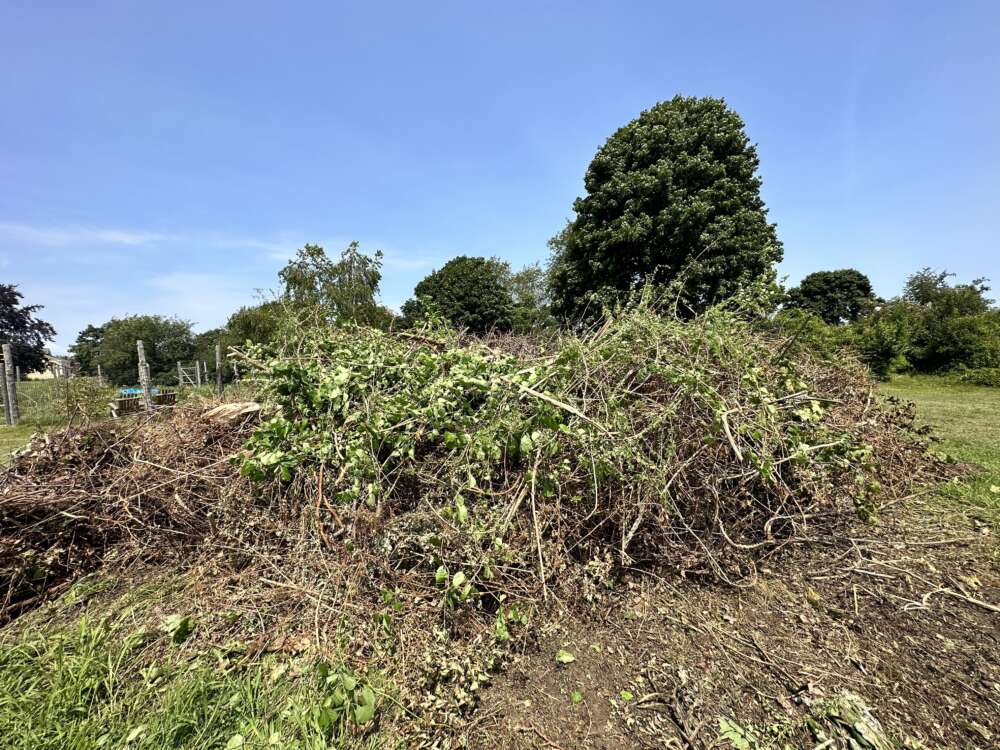The Wrack
The Wrack is the Wells Reserve blog, our collective logbook on the web.
The Wrack is the Wells Reserve blog, our collective logbook on the web.
As a stewardship intern at the reserve this summer, I led a volunteer team in removing invasive plants—especially bittersweet, barberry, and honeysuckle—from five sites that were selected for their ecological value and our chance of success.

The Saw-whet Owl and Laird Norton trails are populated by intermittent barberry and bittersweet along the trail edges, but are still dominated by native plants. We chose sites on these trails where there was a higher chance that by removing invasives we could maintain native plant diversity and keep invasive plants at bay.
The site on the Farley Trail was a relatively small area with a high density of invasive plants surrounded by native ferns.
In the Yankee Woodlot, we selected an area around blight-resistant chestnut trees planted in 2012. Unfortunately, the chestnuts had become threatened by tangles of bittersweet.
Removing invasive plants by hand is tough work physically and mentally. The prolific nature of invasive species is frustrating. There is also a decent amount of effort required to pull these plants and their deep roots from the soil. It feels like when one bittersweet vine is pulled up from the ground, bright orange roots in tow, another three crop up.
Once invasive plants have colonized an area, eradication becomes less and less feasible and containment is the only option. Pulling an invasive plant from a site with only a couple of other invasive plants has a greater impact than pulling one from a site overrun with invasives. Areas where invasive plants haven’t taken control are the highest priority. Pulling out invasive plants from areas still populated by native plants helps prevent an infestation of new invasive plants. Once an area is essentially taken over by invasives it is difficult to control them.

Each week, eight dedicated volunteers, after donning work gloves and mosquito nets, used loppers and mattocks to cut and uproot invasive plants. Many of these volunteers have spent hours wrangling invasive plants in their own backyards. They recognize the damage that invasives inflict on ecosystems and are motivated to control them.
Our volunteers arrived with a mix of experience. Helen had never removed invasive plants or learned to identify them before volunteering for this project. I showed her the ropes and watched her go on to teach other volunteers to identify plants and how best to remove them. Nancy, a master gardener who is also a docent and research volunteer, used her expertise in bittersweet removal to target well established vines wrapped around trees. Richard quickly established his “spot” on the Farley trail where, week after week, he could see the progress he had made in removing invasives and uncovering natives such as ferns and hawthorns.

We made 39 trips from the trails to the burn pile with a trailer full of invasive plants. Each trip contained five or six sizable armfuls of brush and roots. The burn pile grew huge as the weeks went by and was finally burned in August.
Our work sites will require continuous monitoring and control to successfully contain invasive plants. This summer project was part of a renewed effort to address the spread of invasive plants at the reserve, which will also be addressed in updates to the reserve's Natural Resource Management Plan.
